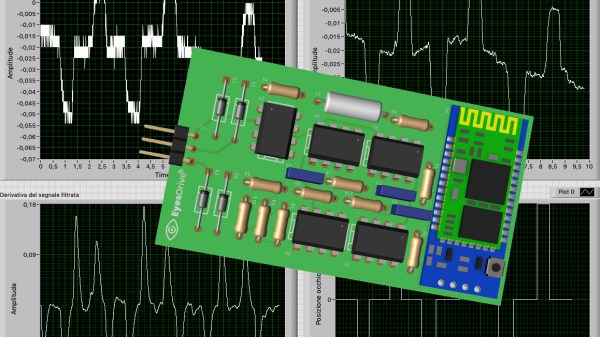Some of us have computer mice with more buttons than we have fingers, resolution tracking finer than a naked eye can discern, and forced-air vents. All these features presuppose one thing; the user has a functioning hand. [Federico Runco] knows that amyotrophic lateral sclerosis, ALS, or Lou Gehrig’s disease, will rob a person of their ability to use standard computer inputs, or the joystick on a motorized wheelchair. He is building EyesDrive for the 2020 Hackaday Prize, to restore that mobility to ALS patients. There are already some solutions, but this one focuses on a short bill of materials.
Existing systems are expensive and often track pupil location, which returns precise data, but EyesDrive only discerns, left, right, and resting. For these, we need three non-invasive electrodes, a custom circuit board with amplifiers, signal processing circuits, and a microcontroller. He includes a Bluetooth socket on the custom PCBs, which is the primary communication method. In the video below he steers a virtual kart around a knotty course to prove that his system is up to the task of an urban wheelchair.
EyesDrive by [Federico Runco] should not be confused with the HackadayPrize2015 winner, Eyedrivomatic, lead by two remarkable hackers, Steve Evans and Patrick Joyce.











